If you had to double your sales from your email list, would you know what to do?
Probably not.
So you’re stuck with an autoresponder sequence failing to sell as effectively as it could. And you probably don’t want to spend 3 years reading copywriting books. You just want to sell more.
You might be tempted to read from the same notes as seemingly every other online business out there. The ones that send emails like this:
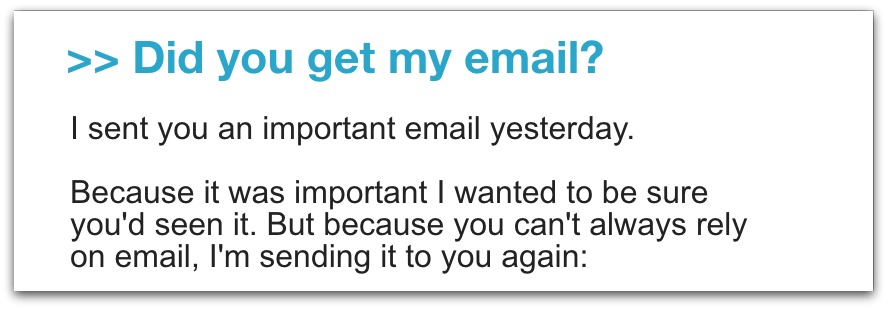
Or this:
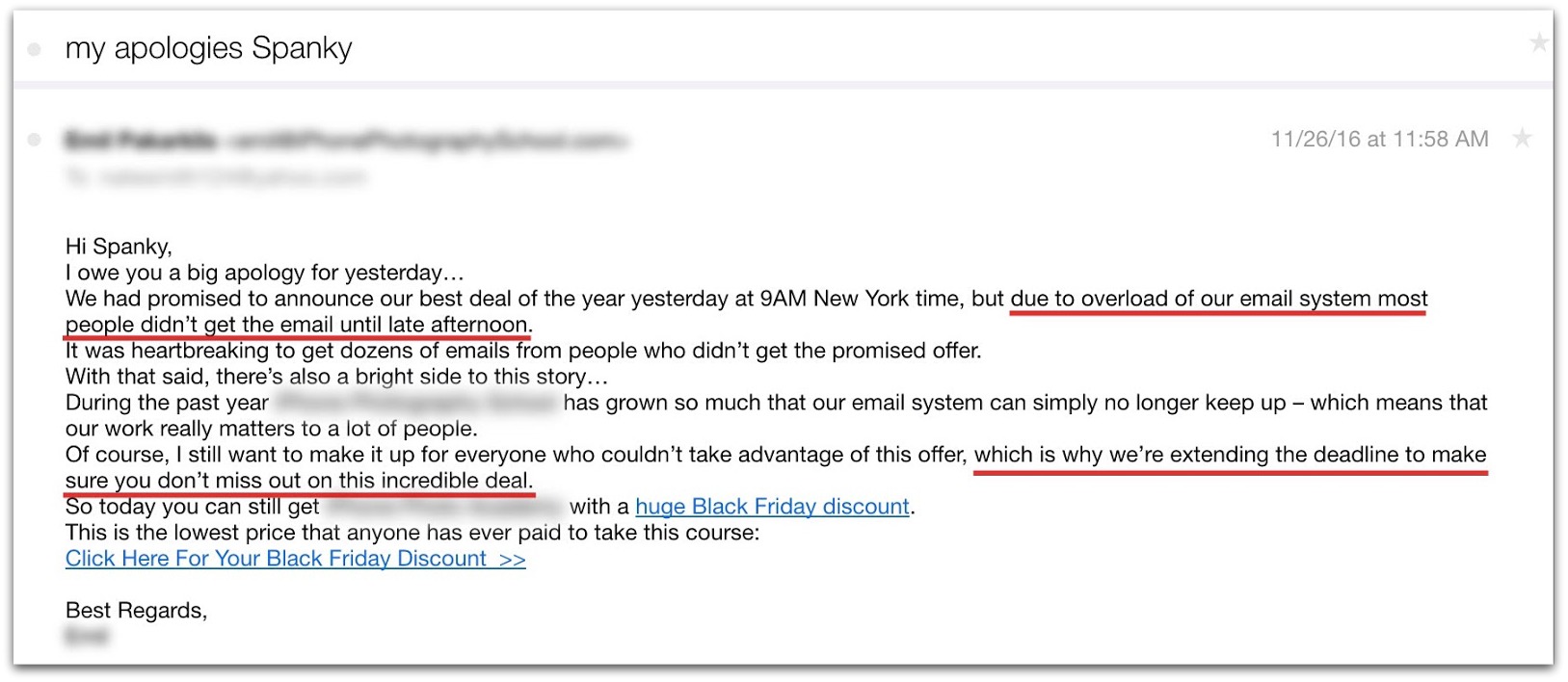
And sure, it's easy to think "If it's working for these guys, maybe I should try it." I wouldn't blame you. I sure did. But think twice before you copy everything in your inbox.
Just one of these unethical marketing cliches would have cost me almost $32,000 last year if I'd used it. (I'll explain how).
In this article, I’ll show you seven shady marketing cliches you might be using in your email campaigns…
And why you should ditch them ASAP (hint: it’s to make more sales without alienating your potential customers).
Ready? Let’s get into it.
Bad Email Marketing Cliche #1: “The Servers Crashed…”
If you’ve read more than a few launch emails you’ve probably seen a version of “the servers crashed”.
Before the sale, they announce how long it will last: one day only, or closes Monday. You get a few reminders: “last chance before it’s gone forever!”.
The “deadline” passes, then surprise! The “we extended our sale/launch because our servers/email provider crashed” email arrives.
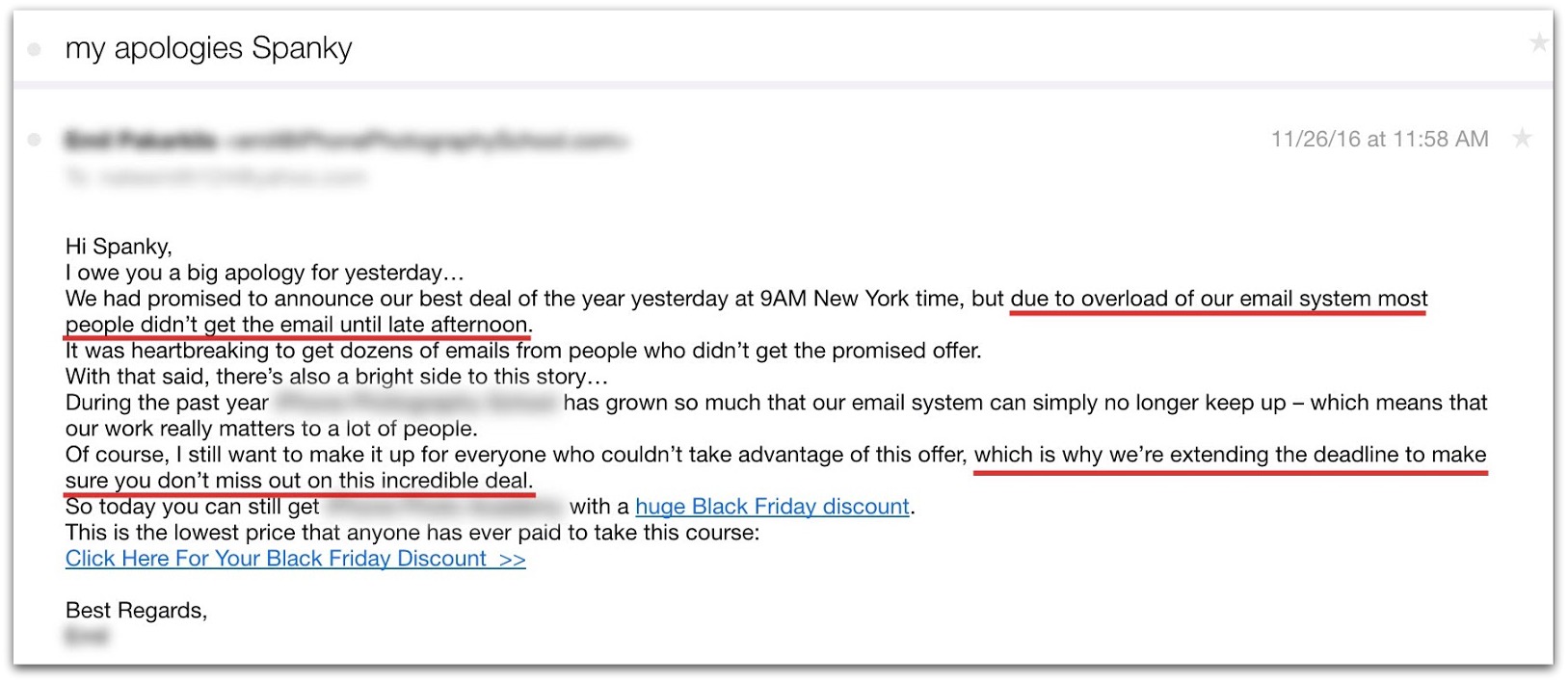
Yes, I do use the pseudonym Spanky to sign up for spammy lists. Don’t judge.
This strategy is called scarcity. (One agency used it to boost sales 226%).
But what happens when you promise an end-date to your sale, but it’s selling like gangbusters, and you’re not ready for the money-storm to end?
You can’t just say “just kidding,” so you might be tempted to use a deceptive rationale like “we’ve had so much demand it crashed our system”.
But not all your customers buy the first time around. In fact, most of mine didn’t buy until they’d already seen at least one offer.
If I’d used a fake rationale like “our servers crashed”, I would have earned up to $32,000 less from one of my lists last year. Here’s what I found when I surveyed 544 of my customers.

- If I’d used a deceptive tactic (something many of the bad cliches have in common), more than 64% of potential customers would have known I was lying.
- Over 60% said they would have been less likely to purchase if they’d discovered I was lying, with 11% saying it would have been a deal-breaker.
Look at that pie chart. Are you really ready to risk it?
What to Do Instead
The good news: You can still make scarcity work for you.
The best news: It works even better if you’re honest about it.
Last summer, I changed three things about my launches, and my sales increased by 207%.
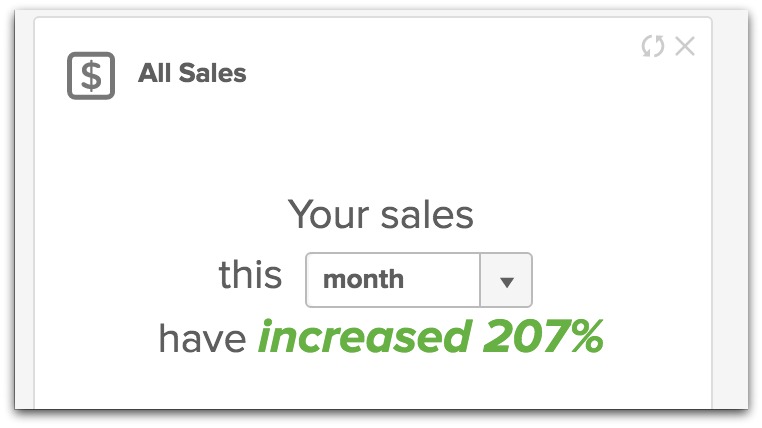
- Offer a bonus for buying in the first 24 hours. Traditionally most purchases happen on the last day of a time-limited promotion, but you can “front-load” your launch by rewarding early-action with a bonus.
- Promise to raise the price between each launch. Then really do it. Just closing the cart or ending the sale gives an incentive to buy - “I might have to wait months before another opportunity” - but promising to raise the price gives an incentive to buy now, even if you might not use the product immediately.
- Offer a guarantee. The final straw that will turn fence-sitters into buyers is a “risk reversal”.
The best part? None of my strategies involved deception.
Bad Email Marketing Cliche #2: “Did you get my email?”
Ever ignore something in your inbox, then get the “Did you get my email?”, or “I sent you an important message” email the next day?
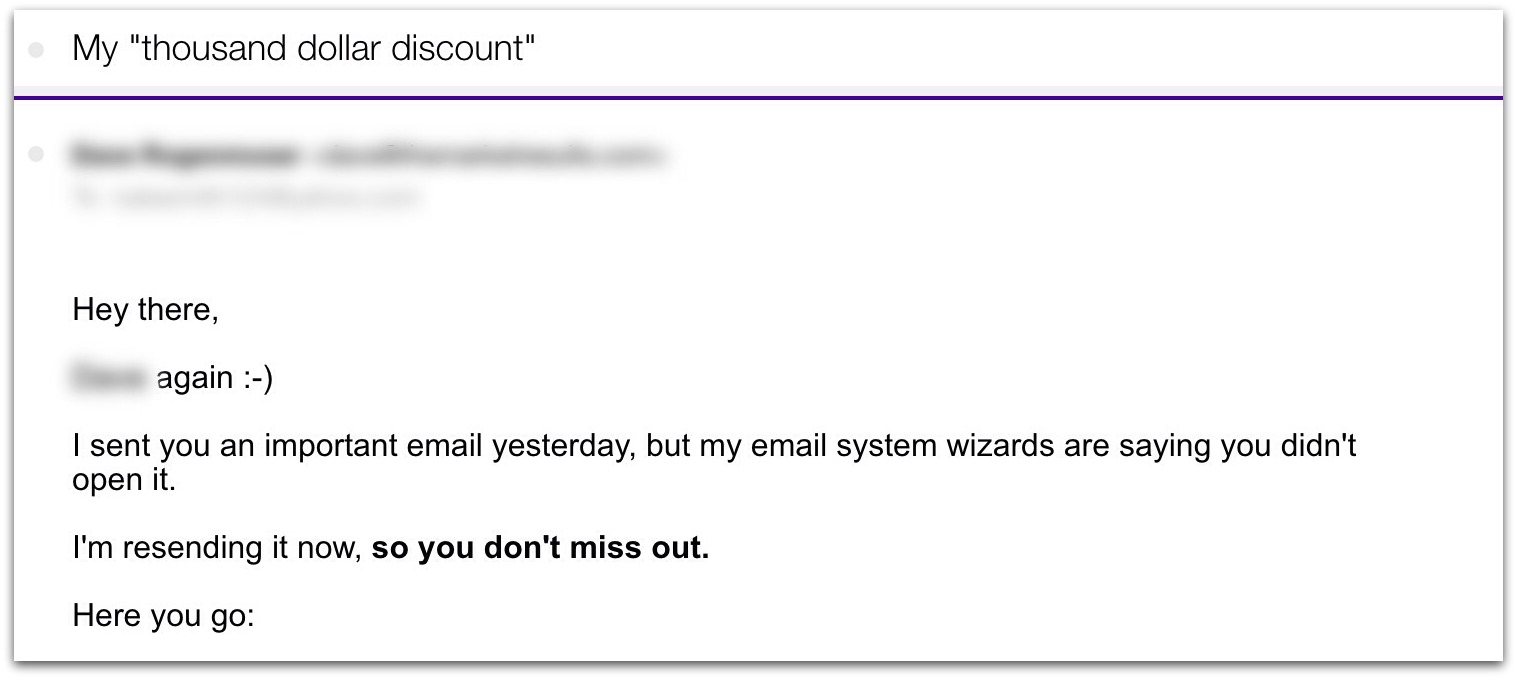
But you don’t always have to write a new email to follow-up. You could just send the same one twice (called a “remail”.) All the benefits of follow-up without even writing a new message? No wonder everybody’s doing it.
But the “did you get my email” message one unethical marketing strategy you might want to avoid. The problem isn’t the follow-up, but the presumption:
“I sent you an important email yesterday”
“I’m sending it again so you don’t miss out”
Both phrases presume the reader will find the message important. My survey respondents ranked it the second-most-annoying email cliche:
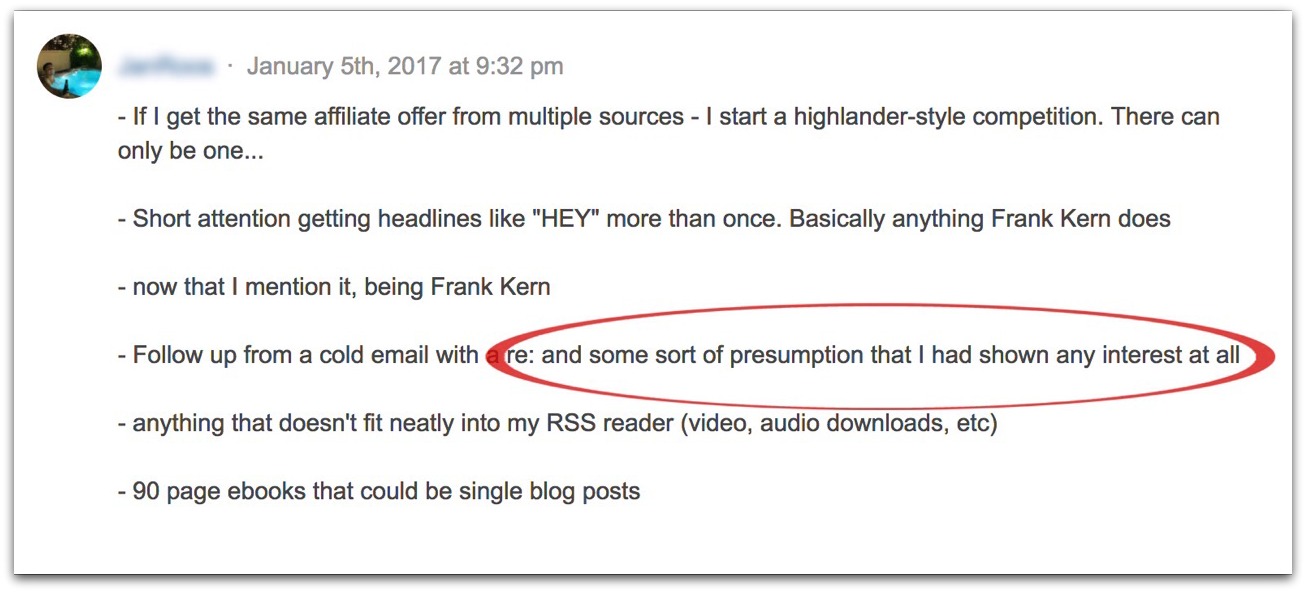
- Sometimes you get subscribers’ attention with something unrelated to what you’re selling, so even though they open, they still have no interest in buying.
- Just because you got them to open your email doesn’t mean they won’t get irritated and unsubscribe if you patronize them.
That’s why you should worry less about how many people are opening your emails, and more about how many people are eventually buying.
What to Do Instead
Remail is a smart strategy. And you can do it without offending customers. Here are 3 ways:
- If you really want people to click a link or send a reply, send a “polite reminder” with new email (instead of the same email with an addendum)? You can still use it over and over in your autoresponder.
- Do as Videofruit’s Bryan Harris did during a recent launch, and ask a question (or issue a challenge) in the first email, then answer it in the next.
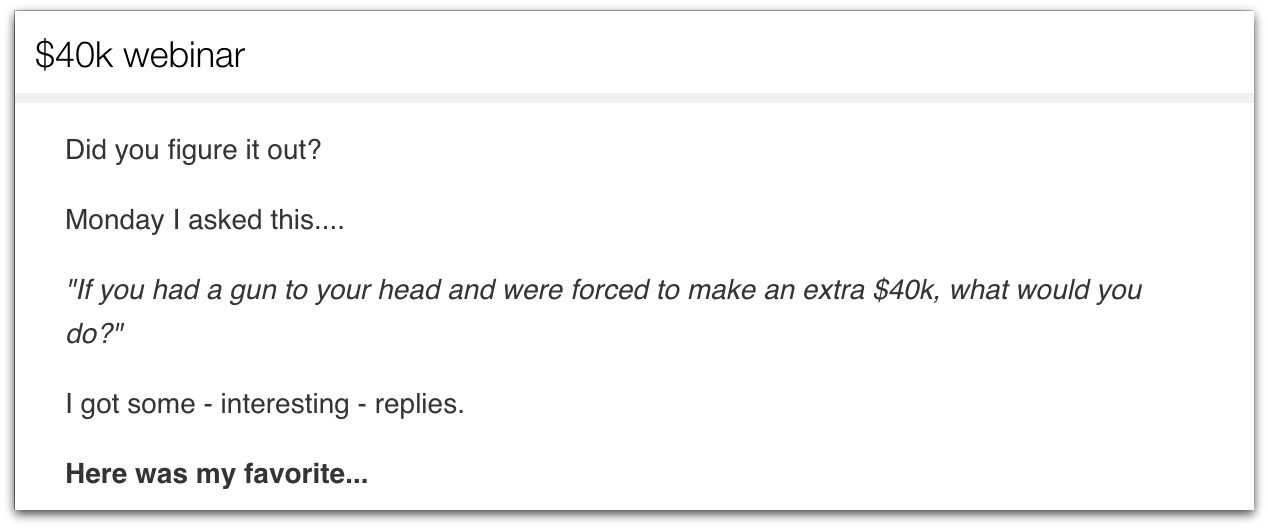
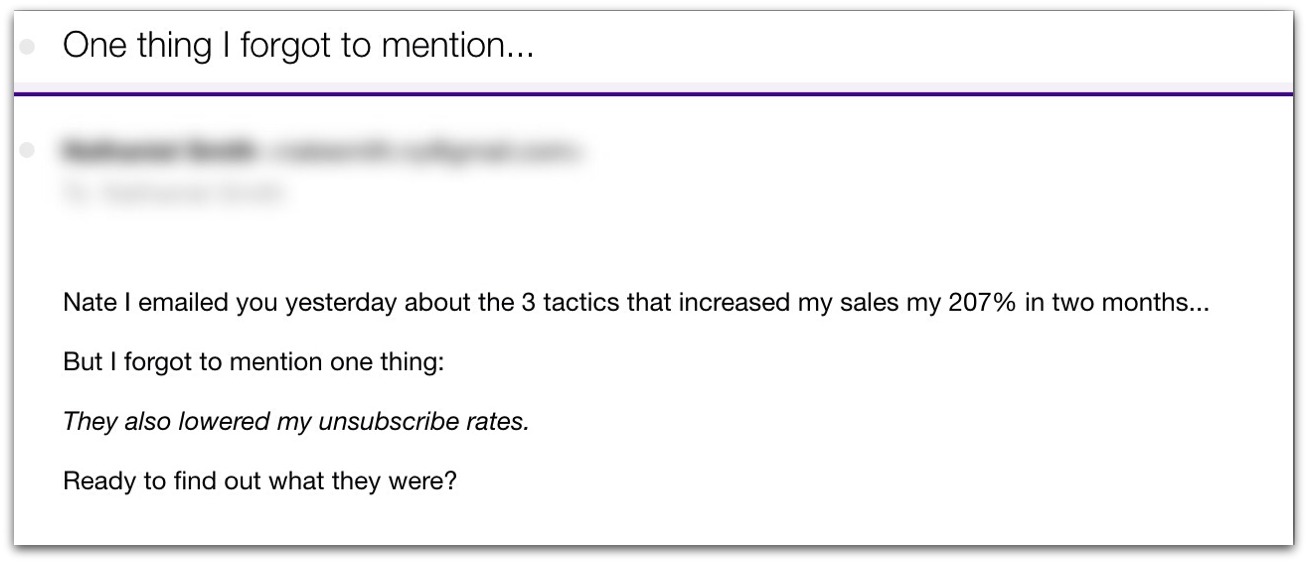
There’s nothing wrong with reaching back out to your list. Just don’t presume your message is important to them. Instead, make it important.
Bad Email Marketing Cliche #3: “Oops I Messed Up”
Ever done a live webinar? They can have pretty low attendance rates.
Maybe you didn’t promote properly, maybe it was bad timing, or maybe people just don’t care about your subject.
So wouldn’t it be great if you could have a redo? Another chance to get potentially more attendees? But you can’t just come out and say “nobody came the first time”, unless you want to shoot social proof - one of the key components of selling psychology - in the foot.
Enter the “oops I messed up” email:
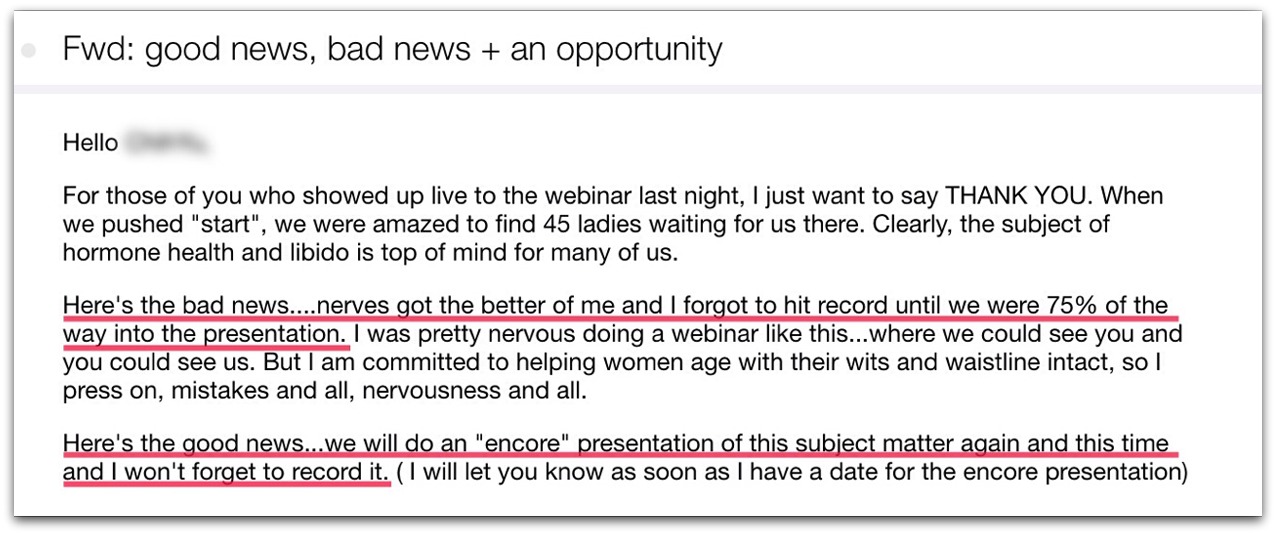
So why do entrepreneurs use this cliche? Two reasons:
- You get to repeat your webinar or event without copping to the real reason.
- You’ll likely get more interest the second time.
Why?
Your “I messed up” subject works like a car crash.
Just like it’s difficult not to look at a car crash, it’s hard to resist seeing how others have failed.
Legitimate emails like this have brought my highest open rates:
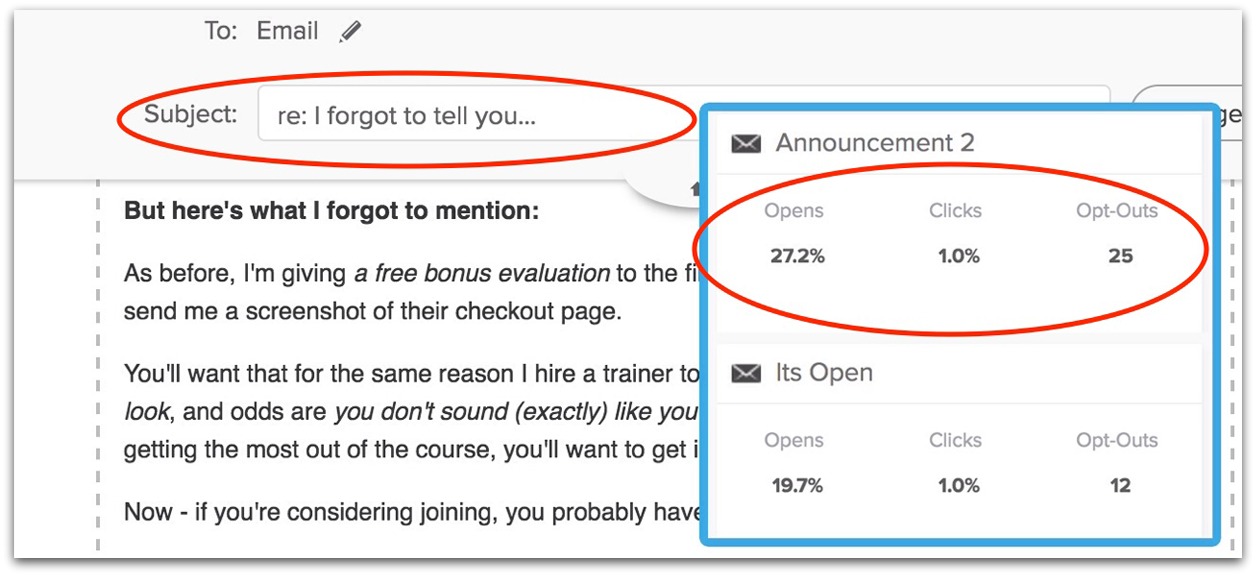
Even if you really messed up, you’ll arouse suspicion from smart readers. The one and only time I sent an “oops I messed up” email, it was true, and I still received replies like this:

- 64% of my audience didn’t buy until at least their second opportunity, so if you do it twice, they’ll know.
- 61% said they would have been at least somewhat less likely to buy if they’d thought I was being deceptive, so at least some of those who know won’t buy.
Luckily, you can attract attention without being deceptive.
What to Do Instead
If you really do mess up, feel free to send a true “mea culpa”.
Just don’t try it twice.
But say you still want a mulligan on that webinar. Here are some great other ways to get people’s attention and goose the open rates without lying:
- Talk about a time in the past when you made a mistake, or, better yet, had the same problem your audience now has. One subject line that’s gotten sky-high open rates in my drum-course funnel is “I didn’t know why I was losing gigs”.
- Take a cue from James Altucher and let your inner wackiness show through:
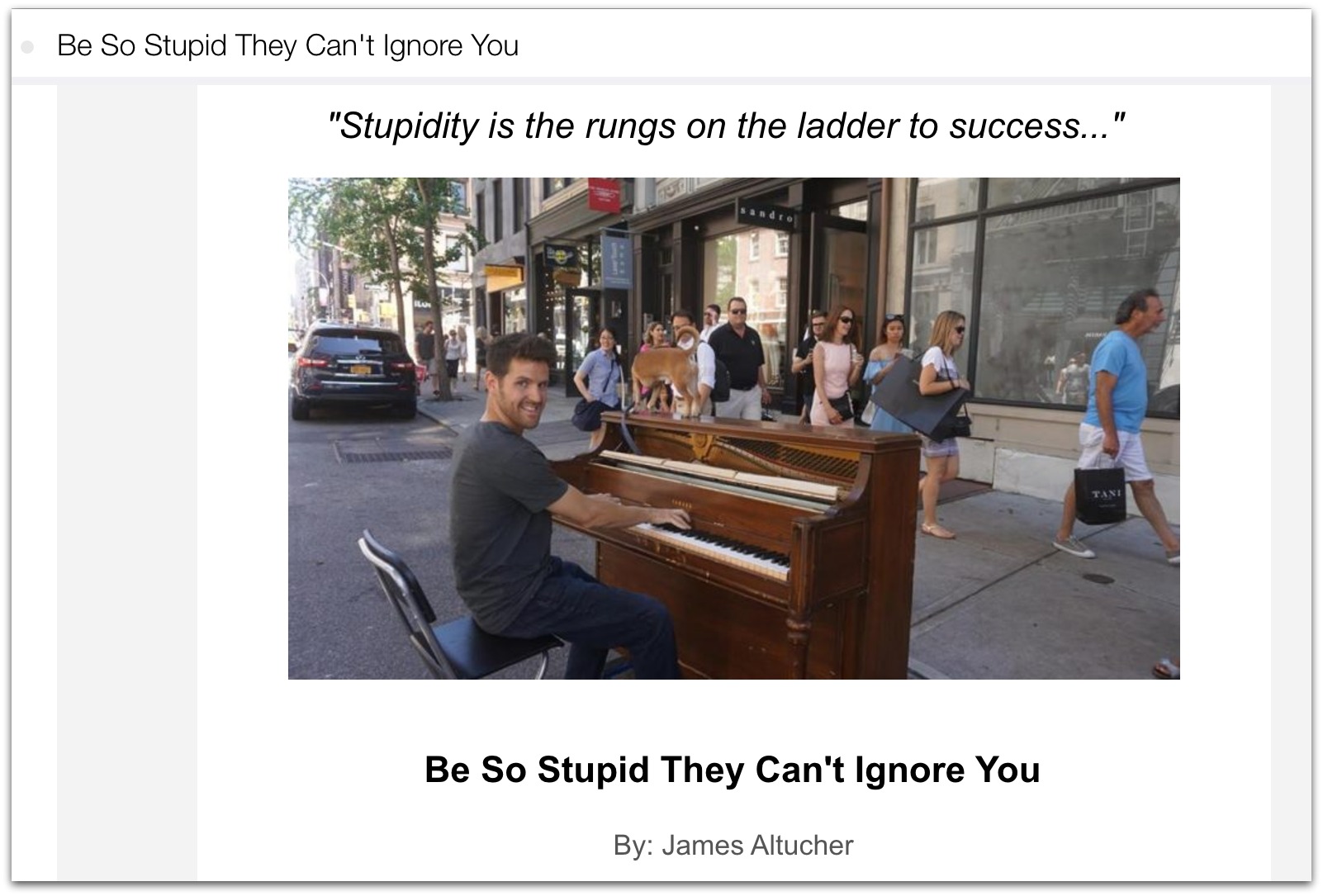
Bad Email Marketing Cliche #4: “Private Message For…”
This appears to be a personal message, until you open it and realize it’s just another broadcast email...
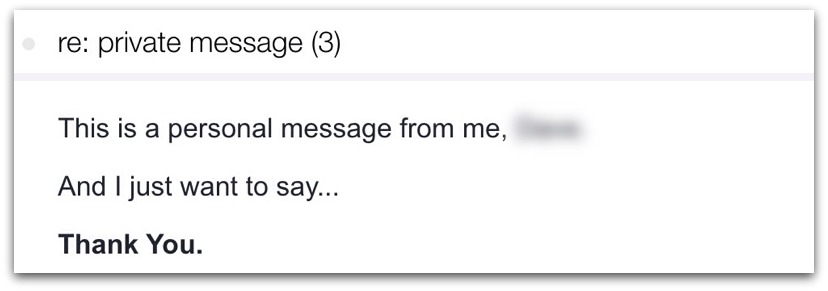
- Show some interest (engage).
- Unsubscribe (save them money).
One way to get these emails opened is personalization. Personalized emails enjoy six times the open rates of non-personalized messages.
But fake personalization will annoy everyone, not just “never-buyers”.
If readers think you’re being deceptive, you’ll lose them. Emails meant to trick you into thinking they’re personal were a reliable “unsubscribe trigger” for my survey respondents:

What to Do Instead
If you’re trying to re-engage subscribers, there are plenty of subject lines that will get the attention of the right people, without offending your potential customers and causing them to unsubscribe.
Here are a few of my favorites:
- “[First name] - I’ll be honest…”
- “Was it us?”
- “We miss you”
- And finally, the slightly controversial "Do you hate me? ;)"
You can still be cheeky, and you’ll still get attention and people opening your emails: just not on a false pretense that’s going to offend.
Know what else? You can still be personal...
Savvy email marketers like Pat Flynn, Ramit Sethi, and Andre Chaperon labor to give their emails the “feel” of a one-to-one message, without outright implying they’re really private.
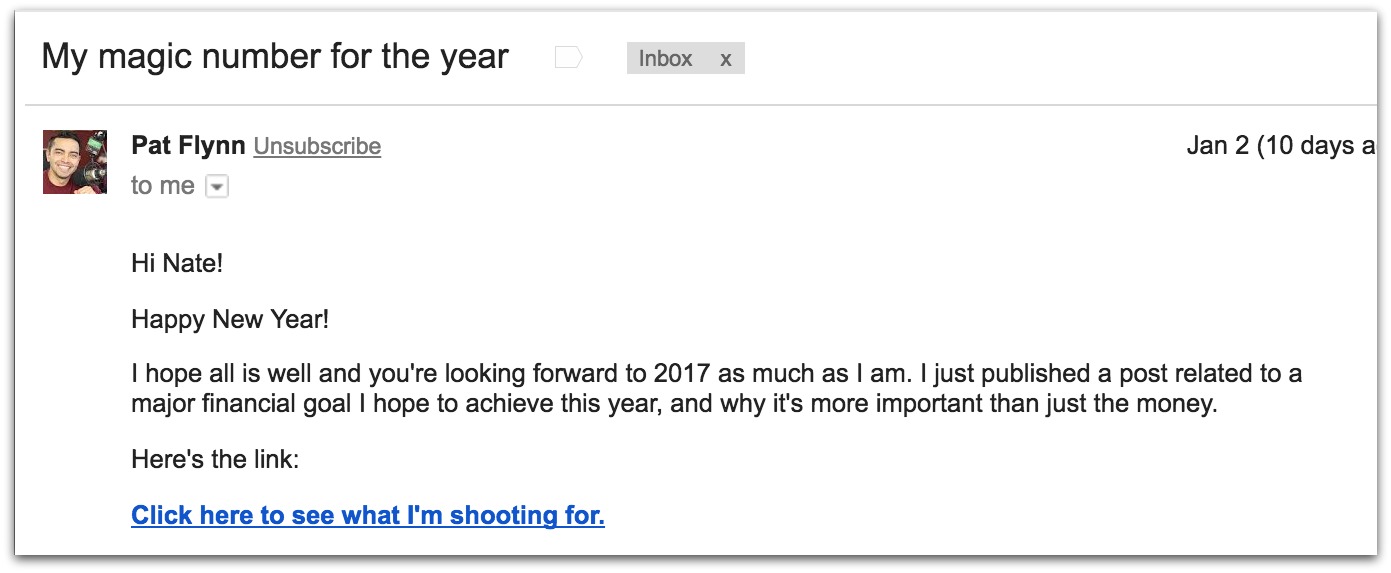
- Use first names to address your subscribers directly.
- Write your emails as if they’re a “message to a friend”, instead of a broad, impersonal “blast” to no one in particular.
And please cut back on disengaged subscribers to begin with by making sure you have a double opt-in process in place. Otherwise, you’re throwing away money.
Bad Email Marketing Cliche #5: “Webinar Closing Soon”
Ever see a Facebook ad promising a “live training”, then click through to the site to discover you’re just in time to catch this week’s “live training”, in just fifteen minutes?
If so, you probably got a follow-up email like this:
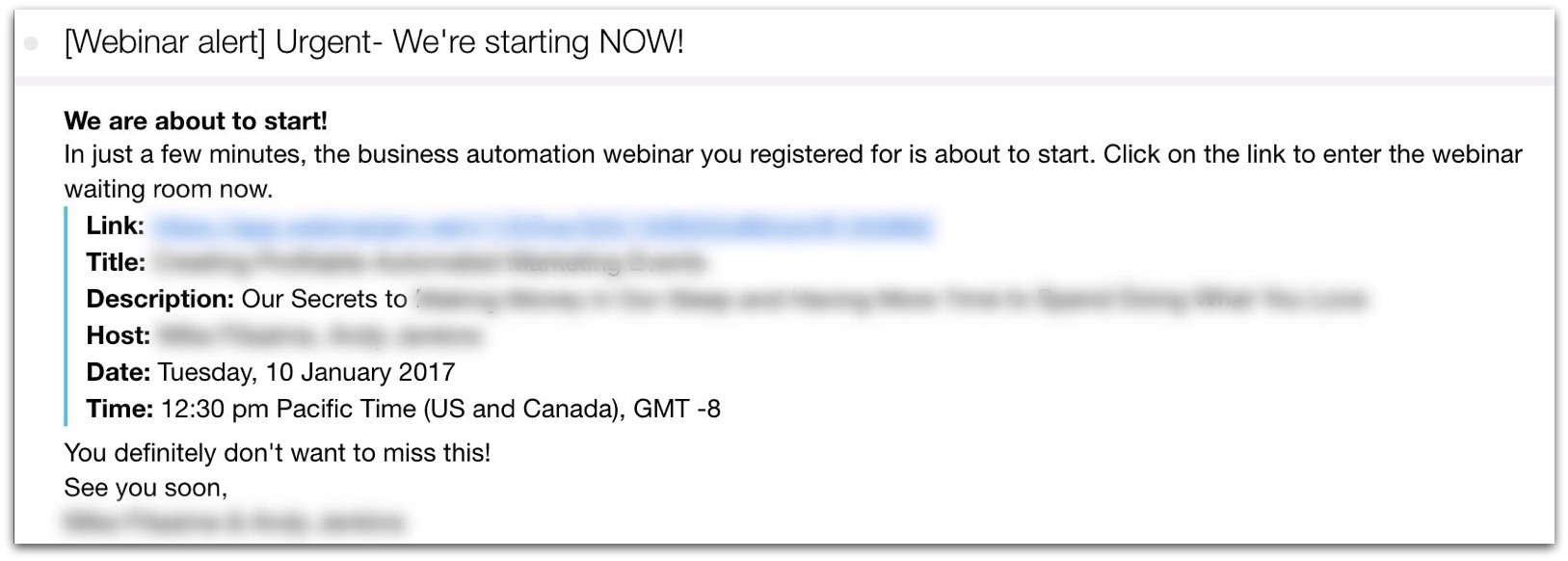
There’s just one problem if you’re the presenter: organizing multiple webinars a week takes a lot of time. That’s why webinar software gives you the ability to pretend your training is live when it’s really not.
If you’ve just signed up for the webinar as a participant, you get an email like the one above, telling you it’s about to start.
And, once inside, there’s even a chat widget and a moderator that periodically asks questions many people seem to answer. (The ruse falls apart, though, as soon as you try to ask the “moderator” any questions, or interact with any of the other “participants”.)
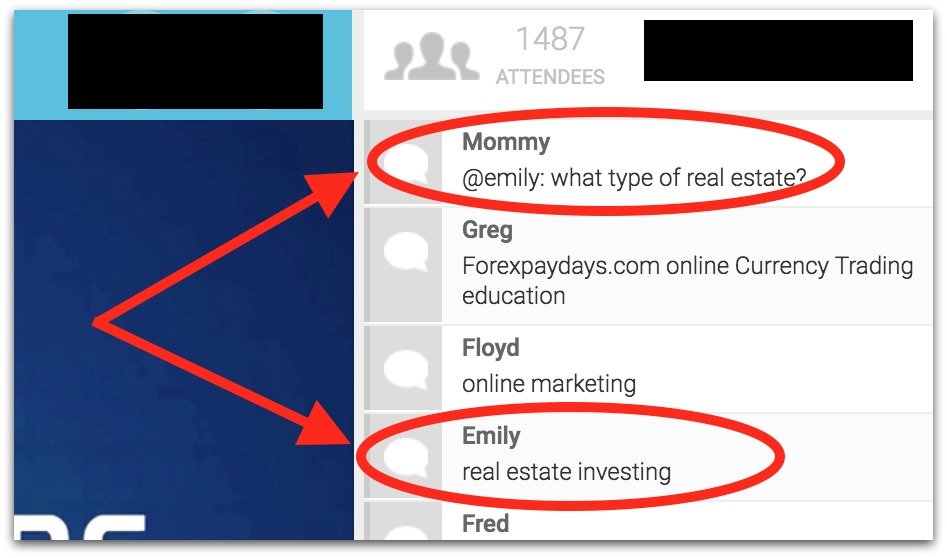
There are two reasons that’s cause for concern if you value making sales:
- Recall that more than half of my customers didn’t buy until at least the second offer. Unless all your sales are happening the first time around, that’s a room full of potential customers watching a “live training” that’s a verbatim duplicate of their first experience.
- Even if you’re only showing a particular webinar once to each new subscriber (a common practice for webinar funnels), you’re not fooling everybody.
Besides, why forfeit what’s potentially the biggest pile of money - making a repeat offer to the same people - just because you need to pretend your webinar is “live”?
What to Do Instead
Here are my favorite alternatives to implying that a webinar is live when it’s not really:
- Instead of implying it’s “live”, play up that your video training is “exclusive.” Then, really make it exclusive. Limit the number of downloads or playbacks people are allowed, and ask them “not to share”.
- Consider “hybrid” options, whereby you don’t redo the entire webinar live every time, but show up at the beginning and/or end to answer questions. Or get an assistant to handle the chat box, and play up the “live feedback” aspect.
- Do what John Logar does and don’t imply it’s live at all. Just call it a “video training”, but make your copy compelling, and promise a solution to a painful problem.
These are ethical solutions to a shady practice of pretending you’re live when you’re not.
Bad Email Marketing Cliche #6: “Follow Us On...Everything”
Ever subscribe to a list, then get a confirmation email that reads like it has OCD?
“Confirm your subscription!”
“Join our Facebook group!”
“Follow us on Instagram!”
“Tell us what kind of content you like!”
“Oh, and also, hit ‘reply’!”
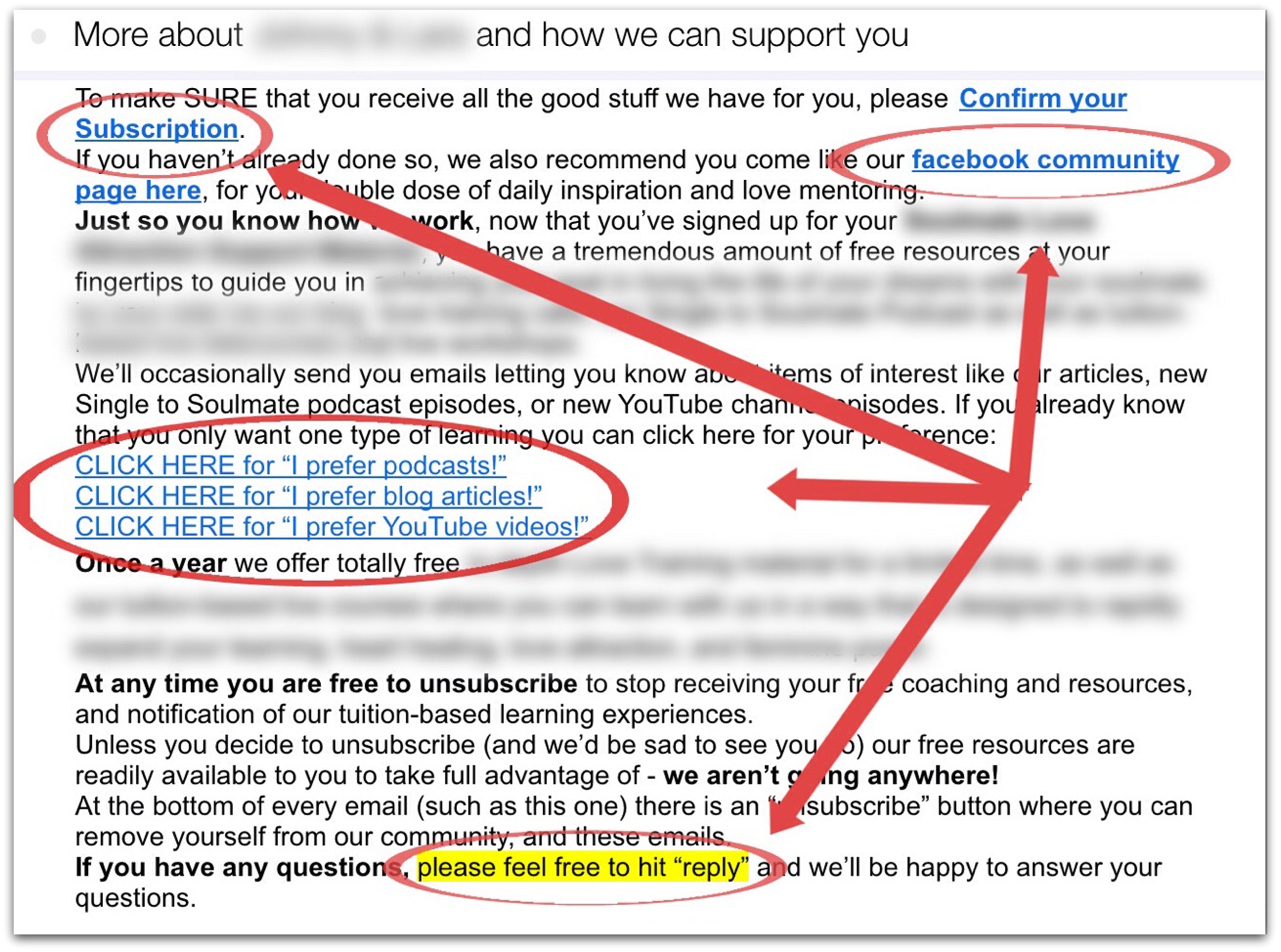
So why are they doing it?
Maybe you’ve heard a business podcast host tell you to “be everywhere”. Sure, the more social platforms you’re on, the more likely people are to find you.
In his book Invisible Selling Machine, Ryan Deiss encourages marketers to “bounce” in their email autoresponders, asking readers to take various actions to engage with you before making them a sales offer.
So: getting “likes” and “follows” on your social media properties: good.
Getting “micro-commitments” from your subscribers every time they answer a question: good.
But that doesn’t mean you should be doing it all in a single email.
In marketing psychology, this is called Choice Paralysis: when you give people too many choices, they’re more likely to make no choice.
But even if you could be guaranteed everybody would make a choice, chances are one of the options is the most valuable to you, so why not give people only that option?
What to Do Instead
There’s nothing wrong with encouraging readers to click through to an article, “Like” a Facebook page, or confirm their subscription.
But, for every email, you should decide on just one action you’d like your readers to take. For a confirmation email, that’s probably confirming their subscription.
Make sure every qualified subscriber confirms her subscription. Here’s how Derek Halpern does it:
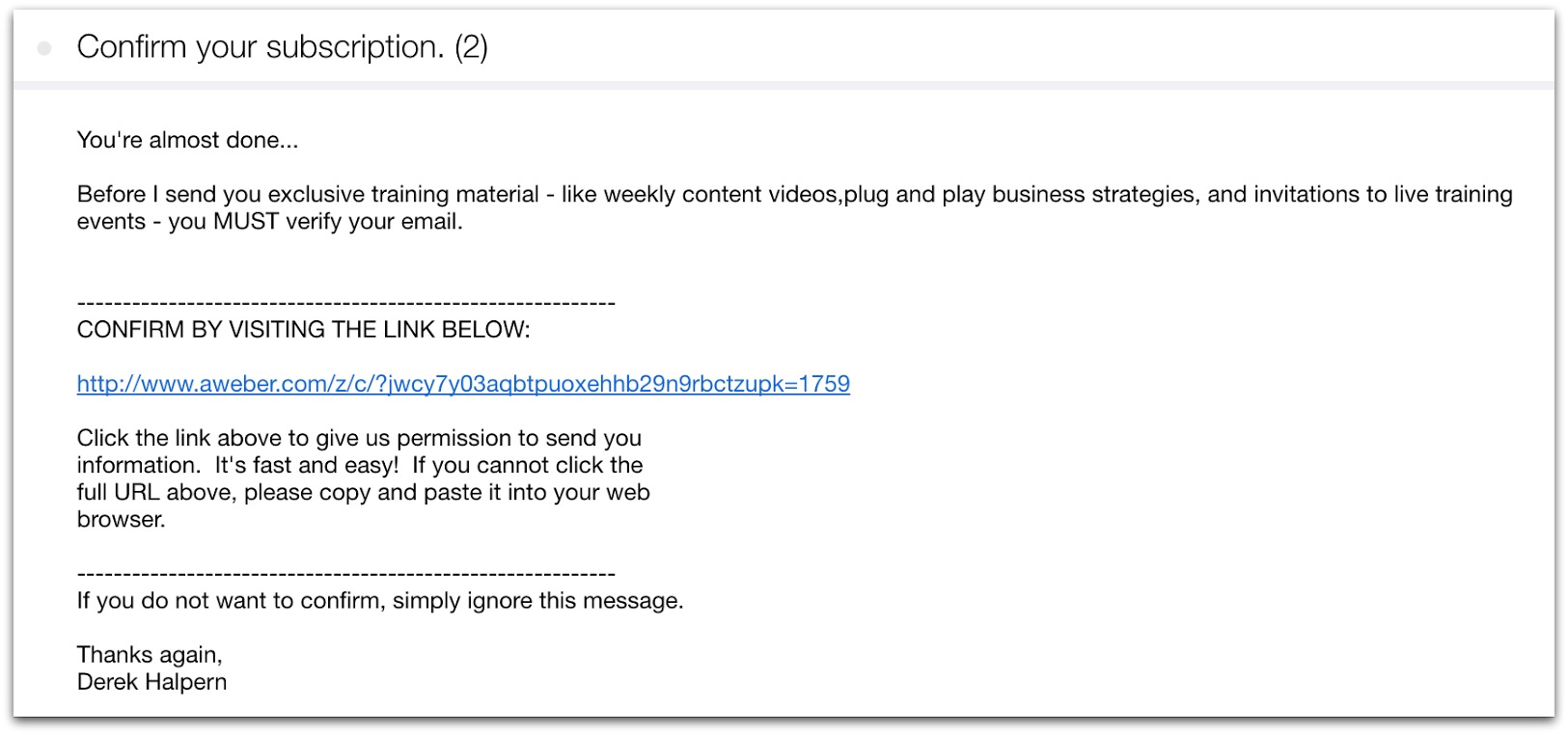
Then, if you’re sending an autoresponder to new subscribers, make just one social media platform the featured CTA (call to action) of each email.
Emails with too many options are annoying, and so are emails that startle you into opening them, then don’t deliver on the promise.
Bad Email Marketing Cliche #7: Clickbait Headlines
Ever seen an email that uses shock or scandal to get your attention?
Like this one from Buzzfeed:
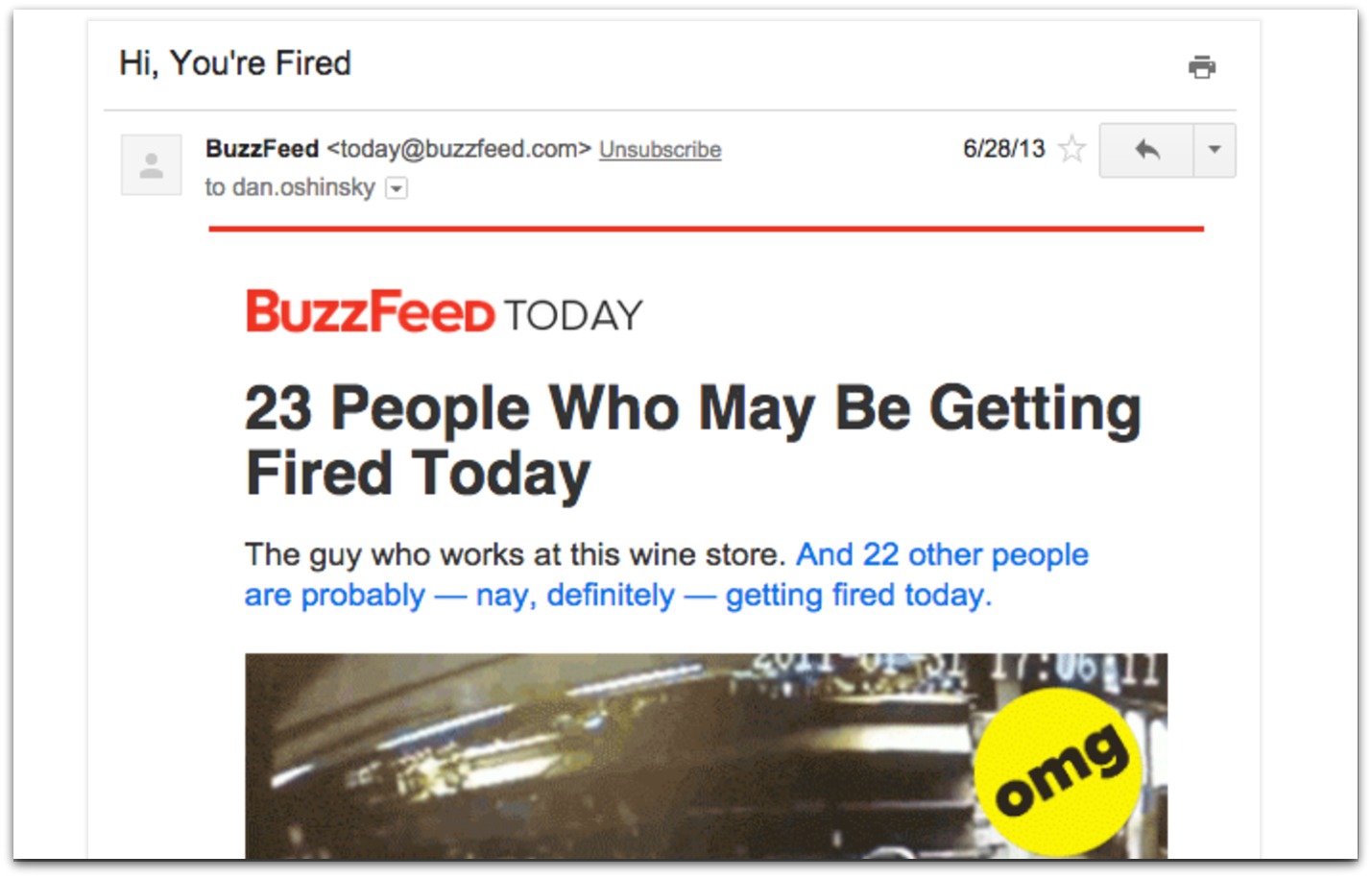
But emails with subject lines that trigger high-arousal emotion reliably get sky-high open rates.
“Emotional arousal,” says Jonah Berger, “is a key ingredient in clicking behaviors. Sadness and anger, for example, are negative emotions, but anger is much more potent.”
But, clickbait headlines don’t just backfire in the long-run; they actually reduce your email’s chances of ever being read.
Fewer people reading your email doesn’t mean fewer hypothetical sales down the road. It means crumpling your money up and throwing it in the garbage.
What to Do Instead
Use any of the suggestions from this article to increase your open rates without risking insulting your readers. Here’s one more I love:
Use a shocking/counterintuitive headline that’s true. (Meaning, the email delivers on the promise.) Just don’t use the word “shocking” ;)
If your email is about sales pages, don’t make your subject “How to write a sales page”. Instead, try something like “I made one change…and watched sales double”.
As I often ask clients, “What’s the TRUE version of that”?
Take The Brakes Off Your Earnings by “De-cliche-ifying” Your Emails
There’s a lot of spammy, cliche-ridden garbage clogging up people’s inboxes...
And it can seem like it’s impossible to break through unless you join the race to the bottom: more outrageous, more shouting in all caps.
But using these cliches is a reliable way to tell up to 60% of your potential buyers that you don’t want their money.
And there are two big things you can do if you want to avoid most of the problems the cliches cause:
- Don’t lie.
- Be ultra clear about the action you want your reader to take.
As long as you keep those in mind, you can use as much marketing psychology as you want!
- Want to use scarcity? Go nuts! Just make sure you really end the sale when you said you would.
- Want to send reminders? Go nuts! Just make sure you give new reasons to read your email, and continue to prove your value.
- Want to show vulnerability, or use a “controversial” or “shocking” headline? Go nuts! Just make sure the email delivers on the promise.
- Finally, want to “bounce” readers all over the internet, to all your social media properties? Go nuts! Just make sure you only give them one action to take in each email.
If you master just those basics, and keep the two takeaways in mind, you’re going to need a bigger suitcase to carry all the money.
Get massive open and click rates without throwing shade. Click here to get my top 10 most opened emails of all time (responsible for more than six figures in earnings).


Comments